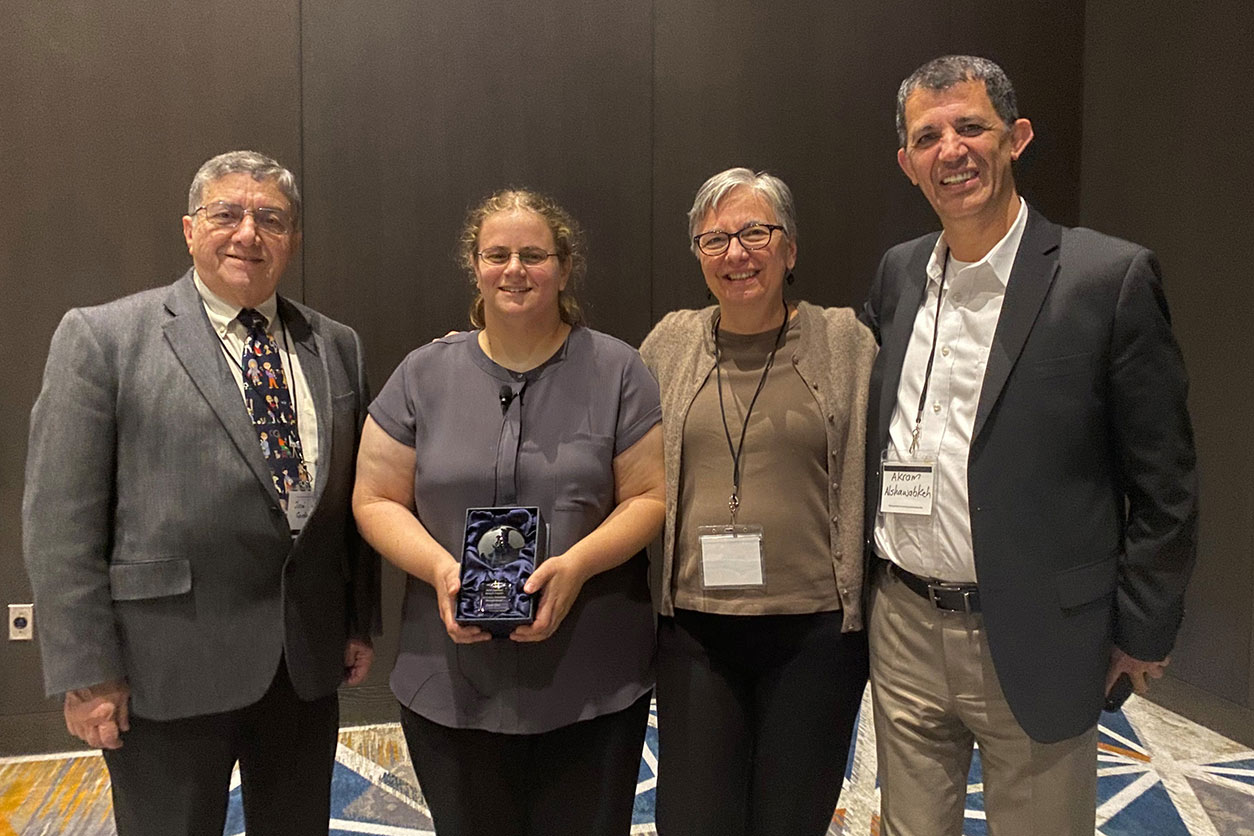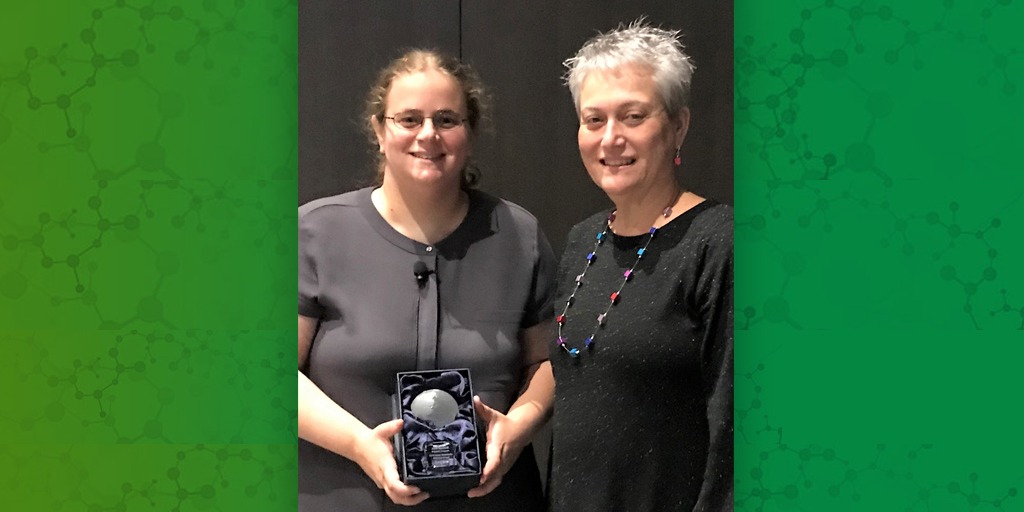The NIEHS Superfund Research Program (SRP) announced that Elana Elkin, Ph.D., is the 22nd recipient of the annual Karen Wetterhahn Memorial Award. Elkin is a trainee in the Northeastern University Puerto Rico Testsite for Exploring Contamination Threats (PROTECT) SRP Center. The announcement was made in Seattle on Nov. 19, during the SRP annual meeting.
Elkin is a postdoctoral researcher at the University of Michigan, which is a part of PROTECT’s multi-institution collaboration (see sidebar). Under the guidance of Rita Loch-Caruso, Ph.D., Elkin examines how exposure to environmental contaminants may affect placental development and function, which play a role in preterm birth and other adverse birth outcomes. Her work contributes to the PROTECT SRP Center’s goal of understanding potential causes of and solutions to high preterm birth rates in Puerto Rico.
“Elana has proved to be among the very best Ph.D. students I have mentored and known during my 32-year career at the University of Michigan,” said Loch-Caruso. “She has a record of outstanding academic achievement, cutting-edge and impactful research, nationally-recognized scientific presentation skills, and leadership and service.”
Pollutants and preterm birth
Elkin is interested in understanding how toxicants interfere with physiological processes during pregnancy and which biological mechanisms are involved. One chemical that she studies is a contaminant commonly found in Puerto Rico’s Superfund sites called trichloroethylene (TCE). Exposure to TCE, which is used in solvents, adhesives, and paint removers, may lead to pregnancy complications and adverse birth outcomes.
In a recent study, Elkin analyzed a breakdown product of TCE that is called S-(1,2-dichlorovinyl)-L-cysteine (DCVC). She found that DCVC, which is formed as the body metabolizes TCE, stimulates placental cell death by activating two metabolic pathways.
Elkin also reported that mitochondria in the cells played two key roles in cell death — they are targets for toxicity and regulators of cell death. These mechanisms provide clues to how TCE exposure affects the course of pregnancy.
Down the road — toxicology, placental biology
In addition to her current research, Elkin works for a Wayne State University startup that isolates placental cells from the cervix for use in research and prenatal testing services.
“Under Loch-Caruso’s expert guidance, I’ve gained expertise in designing experiments with cell cultures and animals, as well as laboratory techniques measuring biological and genetic endpoints,” Elkin said. “The integrated and collaborative structure of the PROTECT Center has helped me learn about the many complicated aspects of managing Superfund sites and how my own contributions fit into the puzzle.”
“Elana is an outstanding student who conducts high-quality and impactful research, communicates her work effectively, and contributes to the environmental health of our society,” said PROTECT SRP Center Director Akram Alshawabkeh, Ph.D. “She holds tremendous potential to be an outstanding environmental health leader.”
 Elkin remains part of the PROTECT Center as a postdoctoral fellow, receiving guidance and inspiration from Alshawabkeh, right; Loch-Caruso, second from right; and PROTECT Center co-director Jose Cordero, M.D. (Photo courtesy of Sara Amolegbe)
Elkin remains part of the PROTECT Center as a postdoctoral fellow, receiving guidance and inspiration from Alshawabkeh, right; Loch-Caruso, second from right; and PROTECT Center co-director Jose Cordero, M.D. (Photo courtesy of Sara Amolegbe)In the future, she hopes to work as a toxicologist for a government agency to gain experience in environmental health policy. Ultimately, she hopes to return to academia to mentor and educate the next generation of toxicologists and placental biologists.
Citation: Elkin ER, Bridges D, Loch-Caruso R. 2019. The trichloroethylene metabolite S-(1,2-dichlorovinyl)-L-cysteine induces progressive mitochondrial dysfunction in HTR-8/SVneo trophoblasts. Toxicology 427:152283.
(Abigail Brewer is a research and communication specialist for MDB Inc., a contractor for the NIEHS Superfund Research Program.)
Source link
factor.niehs.nih.gov

